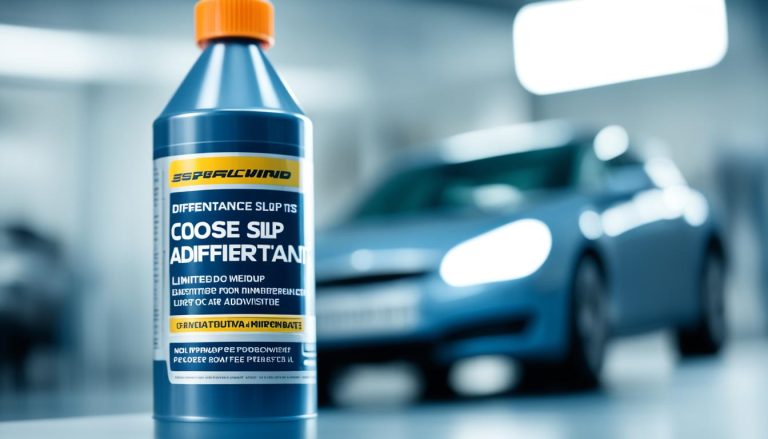Manually Lock Your E-Limited-Slip Differential
If you’re seeking to elevate your vehicle’s performance, particularly under challenging conditions, understanding how to manually lock the electronic limited-slip rear differential can make a significant difference. Whether it’s for off-road adventures or improved traction on slick streets, the manual lock electronic limited-slip differential gives you an edge. We’ll be diving into the world of Select-A-Loc®, a system designed to enhance your driving experience by offering rear LSD manual activation and exceptional traction control.
With just a flick of a switch, you can transition your vehicle from a standard limited-slip differential to a fully locked mode, perfect for those times when you need full-lock capability. This sort of on-demand power is what makes Select-A-Loc® a favorite among power sport enthusiasts. Ready for a deeper dive? Let’s explore this game-changing addition to your vehicle that puts control and performance at your fingertips.
Key Takeaways for Utilizing Your Manual Electronic Limited-Slip Differential
- Learn how to manually lock the electronic limited-slip rear differential for optimal traction.
- Gain insights on rear LSD manual activation that can be done on the move, at low speeds.
- Appreciate the Select-A-Loc® for its ability to enhance your vehicle’s performance in extreme conditions.
- Understand the convenience of in-cab controls that contribute to a seamless transition between modes.
- Discover the advantages of a system that needs no additional installation components like compressors or hoses.
Understanding Your Electronic Limited-Slip Rear Differential (eLSD)
Mastering the sophisticated functionality of your vehicle’s eLSD isn’t just for automotive technicians. With insights into the rear differential lock procedure and LSD operation mechanics, you can appreciate the advanced engineering behind the Select-A-Loc® system. Leveraging the capabilities of electronic limited-slip rear differential locking can significantly improve handling and traction in various driving situations.
The Mechanics Behind eLSD Operation
If you’re curious about how your vehicle maintains optimal traction, look no further than the mechanics of the eLSD system. At the core of the Select-A-Loc® is an ingenious assembly of bearing balls, side gears, and a clutch pack, all working in unison to lock the axle shafts upon demand. This process comes into play when the electromagnetic coil is energized, engaging a pilot cone with the differential case. The precision engineering allows for immediate response, critical when navigating through adverse conditions.
Advantages of Select-A-Loc® Over Traditional LSDs
When comparing Select-A-Loc® to traditional Limited-Slip Differentials (LSDs), the benefits are substantial. Traditional LSDs rely on passive torque transfer, often resulting in delayed engagement. In contrast, Select-A-Loc® boasts instantaneous, direct torque transfer from the differential case to the wheels. This facilitates silent operation and smooth transitions between locked and unlocked states, enhancing both street and off-road performances. Additionally, the hassle-free installation process eliminates the need for external air compressors or hoses.
Early Muscle Cars to Modern Applications
The eLSD technology may seem like a recent innovation, but its roots trace back to the performance-driven designs of early muscle cars. The evolution of LSDs has led to modern marvels like Select-A-Loc®, adapting to the increasing demands for reliability and versatility in modern vehicles. Through technological advancements, these mechanisms provide a greater level of control and safety for today’s drivers, as they conquer diverse terrains and weather conditions with confidence.
Pre-Locking Procedure: Preparing for Manual Engagement
When you’re preparing to utilize the manually locking LSD rear differential on your vehicle, there’s a few crucial steps you should follow to ensure a smooth and secure process. Let’s dive in and explore the necessary conditions and considerations to effectively engage your Select-A-Loc® electronic limited-slip rear differential.
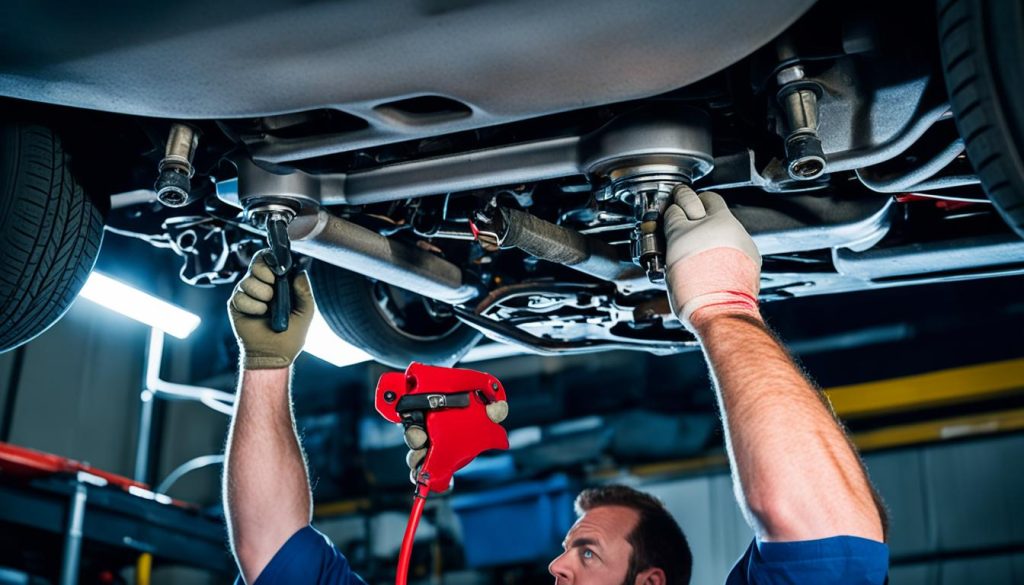
Ensuring Optimal Conditions for Locking
Before you think of engaging the differential lock, it’s vital to check for optimal conditions. Vehicle preparation for differential lock requires a firm, even stance to avoid undue stress on the drivetrain. Moreover, ensuring that your tires are suitably aired and that the drivetrain components are in stellar condition will contribute to a safer engagement of the manually locking LSD rear differential.
Vehicle Stance and Speed Considerations
Maneuvering your ride at a conservative speed is not just for safety; it’s also about precision. To engage your electronic limited-slip rear differential, it’s recommended to keep the pace below 5 mph. This speed allows for proper engagement without causing damage to the differential or other vehicular components. Additionally, confirm that the vehicle is on a stable surface to prevent any lateral movement that could hinder the locking process.
| Condition | Requirement | Purpose |
|---|---|---|
| Vehicle Stance | Stable & Level | Ensures safe engagement of the lock |
| Speed | Below 5 mph | Avoids drivetrain stress upon engagement |
| Tire Pressure | According to Manufacturer Specs | Optimizes traction and differential performance |
| Drivetrain Check | Confirm no inter-axle disconnect | Compatibility with Select-A-Loc® system |
Step-by-Step Guide: How to Manually Lock the Electronic Limited-Slip Rear Differential
If you’re looking to enhance your vehicle’s off-road capabilities or need that extra bit of traction during adverse driving conditions, knowing how to manually lock the electronic limited-slip rear differential is a must. Here’s a friendly, step-by-step rear differential lock instructions to help you through the process.
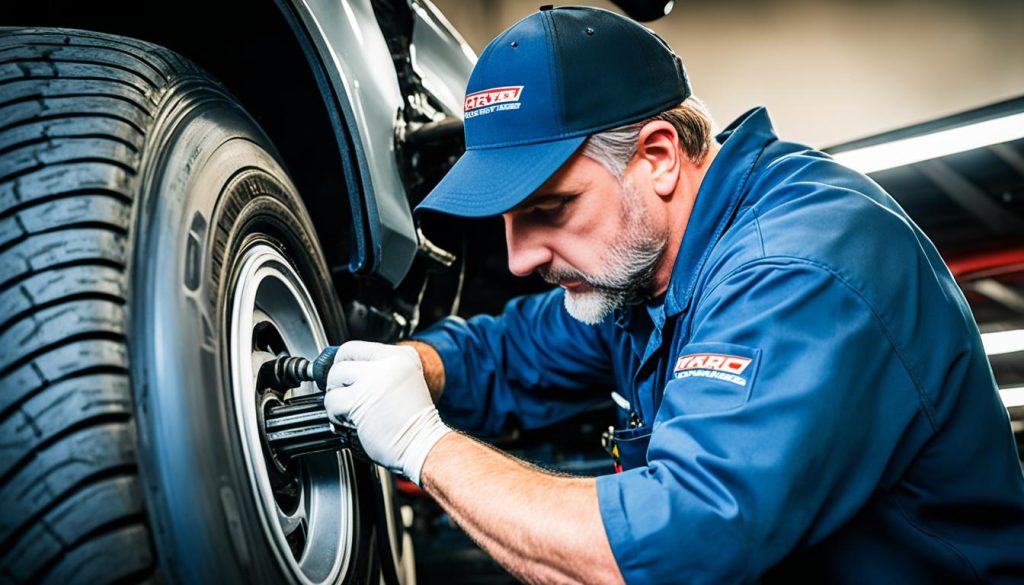
Step 1: Come to a safe and complete stop. Before attempting to lock your electronic limited-slip rear differential, make sure your vehicle is stationary to avoid any damage to the differential mechanisms.
Step 2: Engage the in-cab switch. Inside your vehicle, locate the switch that controls the Select-A-Loc® eLSD. This is typically situated within easy reach of the driver’s seat for convenience.
Step 3: Turn the switch to the ‘ON’ position. By doing this, you activate the differential’s locking sequence, generating a magnetic field that causes the pilot cone to engage, locking the axle shafts and compressing the clutch pack. You will now have manually locking LSD rear differential allowing equal power to be transferred to both rear wheels.
Step 4: Confirm the lock engagement. You may notice a light indicator on your dashboard or hear a slight clicking sound confirming the lock has engaged. This is your queue that your vehicle is now ready to tackle tougher terrain with enhanced traction.
Step 5: To disengage the lock, simply turn the switch to the ‘OFF’ position. Do this once you’ve regained full traction or when the additional locking is no longer necessary — for instance, when you return to normal road conditions.
Remember, always refer to your vehicle’s user manual for specific instructions related to your make and model, as the process can vary slightly. These guidelines are intended for informational purposes and represent general advice on how to manually lock the electronic limited-slip rear differential.
Activating the Manual Lock on Your Rear LSD: In-Cab Controls
When it comes to ensuring your vehicle is capable of traversing challenging terrain or handling tough conditions, the ability to engage your rear limited-slip differential (LSD) can be vital. With the state-of-the-art system provided by Select-A-Loc®, activating the manual lock on your rear LSD is a straightforward and user-friendly process thanks to the innovative in-cab controls designed for quick and reliable operation.
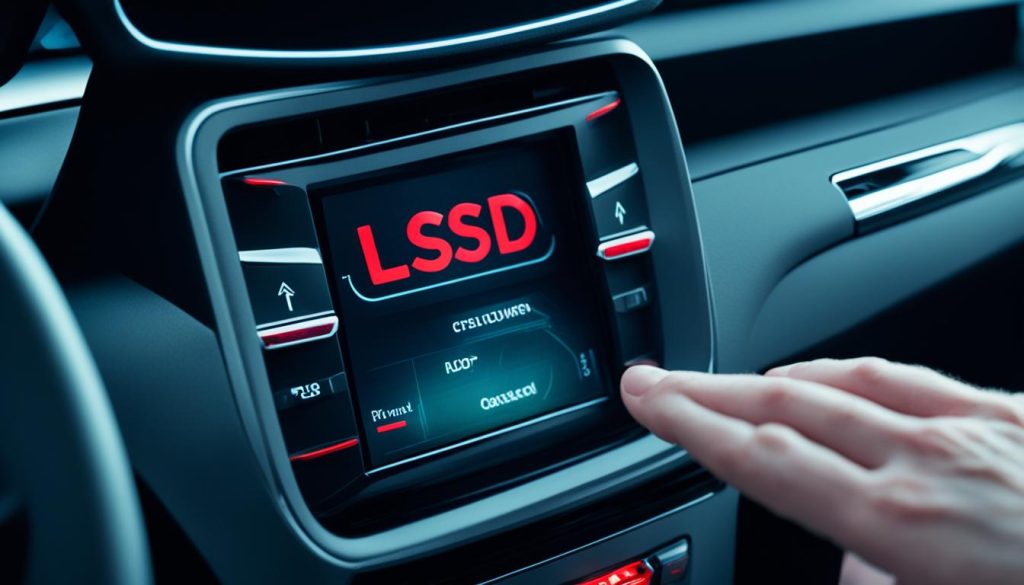
Locating and Operating the Select-A-Loc® Switch
Inside your vehicle’s cabin, you’ll find the Select-A-Loc® switch within easy reach. This switch is the command center for engaging your rear LSD lock. A simple flip to the ON position is all it takes to activate the lock system, bringing robust traction and stability to your wheels when you need it most. The placement of this switch has been thoughtfully designed to ensure there is no need to take your eyes off the road, guaranteeing both safety and convenience.
Electronic Activation and Its Advantages
The brilliance of electronic activation lies in its simplicity and efficiency. Unlike mechanical systems, which can be complex and cumbersome, the electronic activation of your differential lock is swift and trouble-free. This form of activation empowers you with in-cab controls for LSD locking, providing immediate response and formidable control. Furthermore, this system liberates you from the clutches of mechanical failure associated with physical cables and levers, offering a revolutionary leap in the reliability of activating manual lock on rear LSD.
As you navigate the road, the knowledge that you have such responsive and dependable control at your fingertips reinforces a sense of confidence in your vehicle’s capabilities. Whether amid slick conditions, loose gravel, or the unpredictable off-road scenery, the electronic activation of differential lock ensures that you remain commandingly in charge of your journey’s outcome.
Maintaining Your Manually Locking LSD Rear Differential
For enthusiasts aiming to achieve peak performance in their vehicles, understanding the nuances of rear differential maintenance is pivotal. Specifically, when it comes to manually locking LSD rear differentials, such as those equipped with Select-A-Loc® technology, routine care is paramount in preserving their functionality and performance.
Accomplishing comprehensive maintenance will not only ensure smooth operations but can also extend the Select-A-Loc® warranty. By adhering to the detailed recommendations set forth in the installation manual, you can take proactive steps towards preventing any potential mechanical setbacks.
One of the essential components of manually locking LSD rear differential care is the utilization of high-quality differential oil. Auburn Gear Limited-Slip Additive is designed specifically to complement your Select-A-Loc® system, ensuring that all internal mechanisms remain well-lubricated and protected against wear and tear.
- Regularly check and replace the differential oil according to manufacturer guidelines.
- Inspect the differential for any signs of external damage or leaking seals which could indicate internal issues.
- Listen for unusual noises during operation, which may suggest a need for service or adjustment.
- Pay attention to the performance of the differential lock; any hesitation or irregularity during engagement should be addressed promptly.
- Make sure the in-cab control switch is functioning correctly and receiving proper electrical connections.
The Select-A-Loc® model boasts a generous warranty, allowing you peace of mind when tackling harsh conditions or tough terrains. Under standard conditions, a 1-year warranty is provided. By incorporating Auburn Gear Differential Oil, your warranty is eligible to cover an additional year of operation.
This warranty stands as a testament to the reliability and durability of the Select-A-Loc® differential. It represents the manufacturer’s commitment to quality, as well as their confidence in the longevity of their product when given the proper attention and care it deserves.
Maintaining your manually locking LSD rear differential isn’t just about following a maintenance schedule; it’s about safeguarding your investment and ensuring you have continuous access to the power and performance when you need it most.
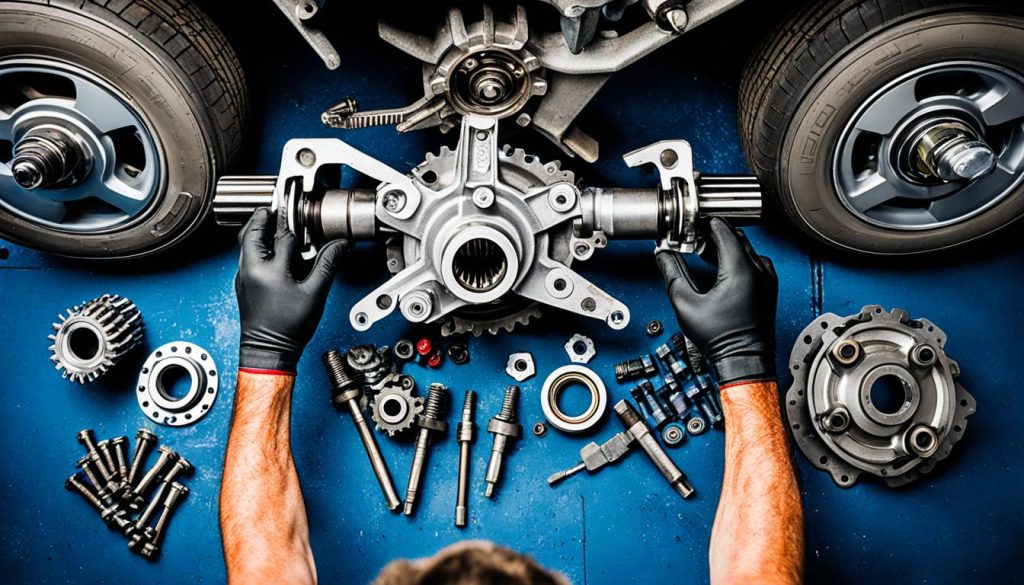
Troubleshooting: Issues with Manually Locking and Unlocking
If you’ve encountered difficulties with your vehicle’s manually locking limited-slip rear differential, you are not alone. Troubleshooting rear LSD can be a nuanced task that requires close attention to the behavior of your differential. Identifying common problems early can save you time and prevent potential damage to your differential system, ensuring that your journey remains smooth and your performance uncompromised.
Identifying Common Problems
Common manually locking limited-slip rear differential issues range from a failure to lock or unlock to unusual noises during operation. The root cause of these problems can be traced to either electrical faults, such as a faulty switch or a blown fuse, or mechanical issues, including a misaligned pilot cone or worn clutch packs. Your first step should be to consult the step-by-step guide provided with your Select-A-Loc® system to ensure proper procedure was followed during locking and unlocking cycles. Regular inspection and routine checks can help you quickly pinpoint these issues before they become severe.
When to Seek Professional Assistance
Should your troubleshooting efforts not yield results, or if you’re unsure about your diagnostic, it may be time to seek professional assistance for LSD issues. Expert technicians have the tools and expertise to conduct a thorough examination and rectify any complex problems within your vehicle’s differential system. Remember, the integrity of your Select-A-Loc® system is crucial for optimal vehicle performance; therefore, enlisting professional services could be a wise choice to maintain the quality and longevity of your eLSD. Always rely on certified professionals to tackle your LSD concerns to ensure safety and functionality on the road.
FAQ
How do you manually lock the electronic limited-slip rear differential?
You can lock the electronic limited-slip rear differential manually by locating the in-cab switch, typically within the driver’s reach, and turning it ON. This activates the electromagnetic mechanism, causing the pilot cone to engage with the differential case and lock the axle shafts together for improved traction.
What are the advantages of the Select-A-Loc® eLSD over traditional LSDs?
The Select-A-Loc® eLSD provides on-demand full-lock capability, silent operation, and easy installation without the need for an air compressor or hoses. It delivers direct torque transfer from the case, which is advantageous for both street and off-road applications.
Can the electronic limited-slip rear differential be locked at any speed?
No, for safety and effective operation, you should only engage the manual lock on the electronic limited-slip rear differential when the vehicle is moving at a low speed, preferably below 5 mph.
What steps should be taken before manually locking the LSD rear differential?
Before manually locking the LSD rear differential, ensure that your vehicle is at a suitable speed (below 5 mph), the vehicle is in a stable driving condition, and it does not have an “inter-axle disconnect” system which is incompatible with the Select-A-Loc® eLSD.
How do you activate the manual lock on your rear LSD using the in-cab controls?
To activate the manual lock on your rear LSD, find the in-cab Select-A-Loc® switch and turn it ON to engage the locking mechanism. The electronic activation system is quick, reliable, and eliminates the need for mechanical linkages.
What maintenance is required for a manually locking LSD rear differential?
Regular maintenance for a manually locking LSD rear differential includes using the proper differential oil, following the recommended servicing intervals, and ensuring that the system is free from debris or damage. Using the Auburn Gear Limited-Slip Additive and following the specific care instructions can extend the warranty of the Select-A-Loc® model.
What are some common issues with manually locking and unlocking the LSD, and how do you address them?
Common issues can include the LSD failing to lock or unlock due to electrical or mechanical problems. To address these, consult the step-by-step troubleshooting guide provided by Select-A-Loc® or seek professional assistance if the problem persists or is beyond the scope of standard troubleshooting.
When should you seek professional assistance with your manually locking limited-slip rear differential?
You should seek professional assistance when you have trouble with your manually locking limited-slip rear differential that is not covered in the troubleshooting guide, if you are not confident in your mechanical skills, or when dealing with complex issues that require specialized tools or expertise.



